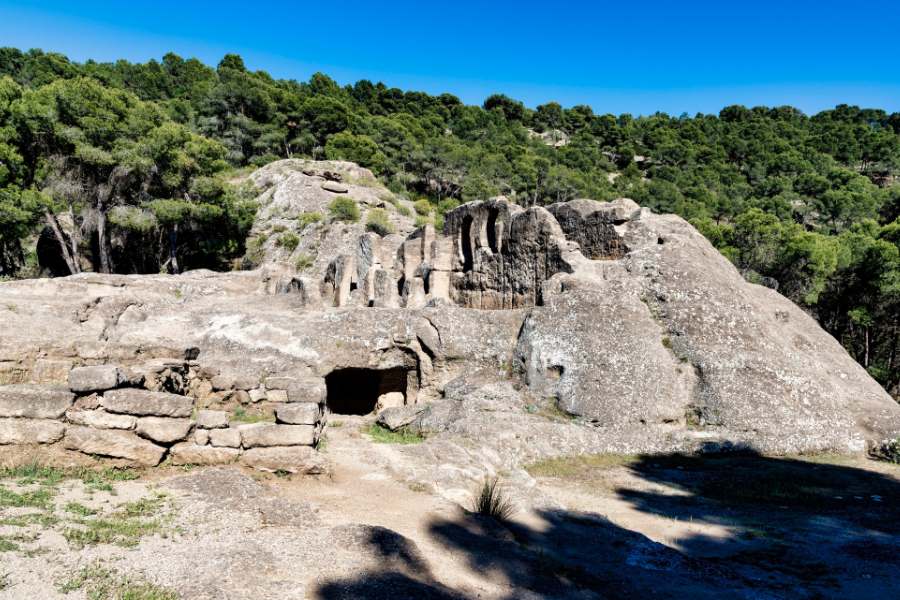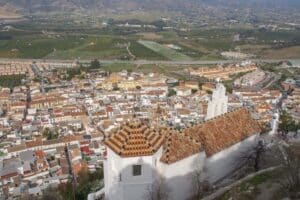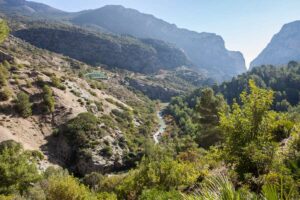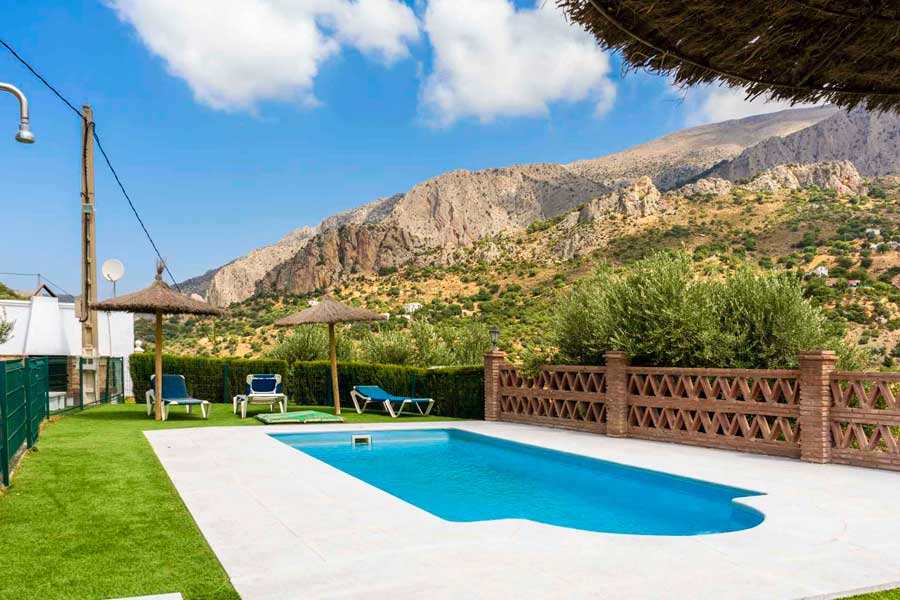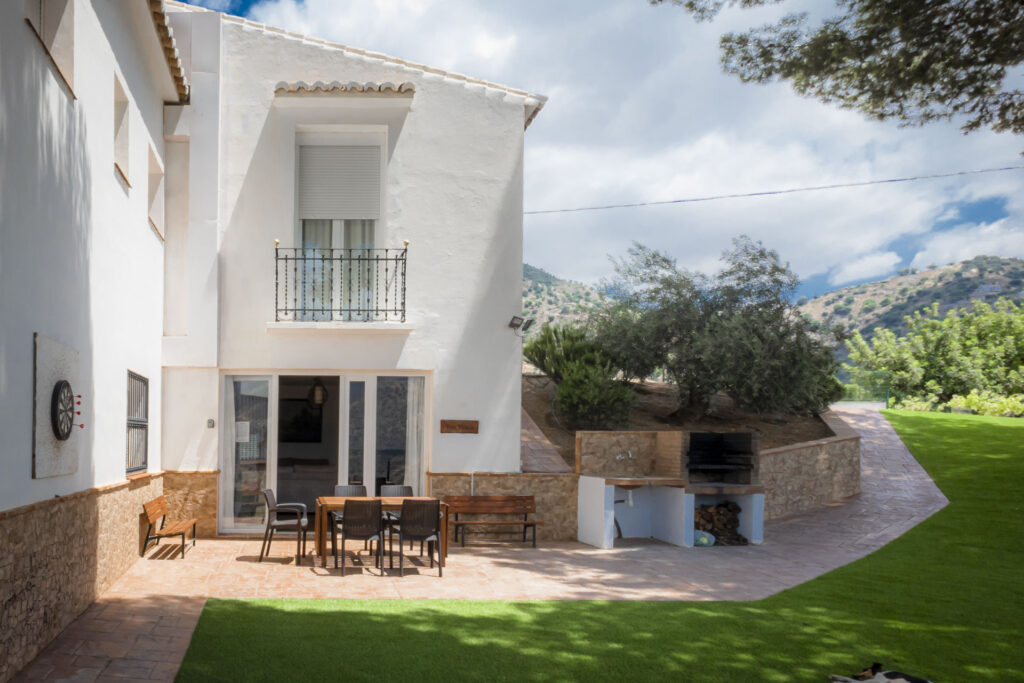In the surroundings of Caminito del Rey, specifically in the municipality of Ardales, in the region called Mesa de Villaverde, lie the vestiges of the legendary Bobastro fortress. It was here that Omar ibn Hafsún, a rebel of Muladi Visigoth descent (Christians converted to Islam), erected a fortress that defied the attacks of the Umayyad forces, the dominant dynasty in Córdoba, during their confrontation between the years 880 and 919.
In this article we are going to delve into its history, so that it serves as an introduction and starting point for when you visit them.
Índice de contenidos
ToggleWhat is Bobastro?
Bobastro, an ancient enclave in the north of the province of Malaga (Spain), emerges as a living testimony of the audacity of Omar ben Hafsún, who in the year 880 challenged the emir of Córdoba and established the seat of his power here. The subsequent conquest by Abd al-Rahman III was celebrated with pomposity, proclaiming in every mosque the eradication of Bobastro, which he described as a bastion of polytheism and falsehood, a refuge for Christianity.
This episode, followed by the ascension of Abd al-Rahman III to the caliphate, underlines the significance of this enclave as a focus of resistance in al-Andalus, an aspect highlighted even by Arab sources, which tended to omit events related to Christians in their territory. Although there is an alternative theory that places Bobastro in Ronda, it is the impressive rock-cut constructions that stand out here, including a Mozarabic rock church and a castle.
History of the Bobastro Ruins
Omar ibn Hafsún, a prominent figure in the history of al-Ándalus, is the focus of a cultural tourism route due to its central role in the most significant revolt faced by the emirate of Córdoba to late 9th and early 10th centuries. Most likely originally from Parauta, descendant of a Visigothic family converted to Islam (Muladíes), the influence of his lineage is manifested in the armed support provided by an uncle of his father on two occasions.
After a fatal conflict that led him to flee to Tahert, in present-day Algeria, where he worked as a tailor's apprentice, legend has it that an elderly visitor from Al-Andalus, prostrate before him, he prophesied his future reign. Returning to his homeland in 880, he rallied those dissatisfied with the taxes imposed by Córdoba on the Muladíes and established a fortress at Bobastro, from where he challenged Córdoba power.
Initially considered by the Umayyads as a simple bandit, they soon realized his true influence. After surrendering to Muhammad I in 883 and participating in a campaign in Álava as part of the Umayyad army, Omar returned to Bobastro in 885 to continue his fight against the Córdoba aristocracy.
Omar ibn Hafsún He created an alternative state to the caliphate, covering vast territories that included the current provinces of Cádiz, Seville, Córdoba, Jaén, Granada, Almería, Murcia and, especially, Málaga, where it established its headquarters in Bobastro (Ardales).
Despite his conversion to Christianity around the year 898, which gained him the support of the Christian population of the region, Omar lost the support of some of his followers. Defeated at the Battle of Poley in 891, his decline began, and although he held power for a few more years, he finally perished at the fortress of Bobastro in 917.
Although his children continued the resistance, they were finally defeated in 928 by Abd al-Rahman III. The unearthing and public display of Omar's remains as a warning by Abd al-Rahman III marked the end of the rebellion, forcing the Hafsun clan into exile. Omar's daughter, Saint Argentea, is remembered in the Catholic Church as a virgin and martyr.
Do you want to visit the Bobastro Ruins?
If you are planning to visit the Bobastro Ruins of Ardales, we recommend that you save this article and write down how to get there, as well as their hours and telephone numbers:
How to access the Bobastro Ruins?
To access this historic place, you take the Álora-Ardales highway, approximately 2 km north of El Chorro, on the south side of the Desfiladero de los Gaitanes. From that point, a paved track ascends towards the Las Mesas de Villaverde hill. Halfway there is the pedestrian entrance to part of the Bobastro ruins. At the top of the hill, there are the remains of a fortification, from where you can see an exceptional panoramic view of the surroundings. The presence of a reservoir at the top, supplied with water at night to generate electricity during the day, adds a surprising element to this historic site.
Bobastro Ruins Schedule
| Day | Opening and closing hours |
| Monday | Closed |
| Tuesday | 10:00–15:00 |
| Wednesday | 10:00–15:00 |
| Thursday | 10:00–15:00 |
| Venerdì | 10:00–15:00 |
| Saturday | 9:00–15:00 |
| Sunday | 9:00–15:00 |


